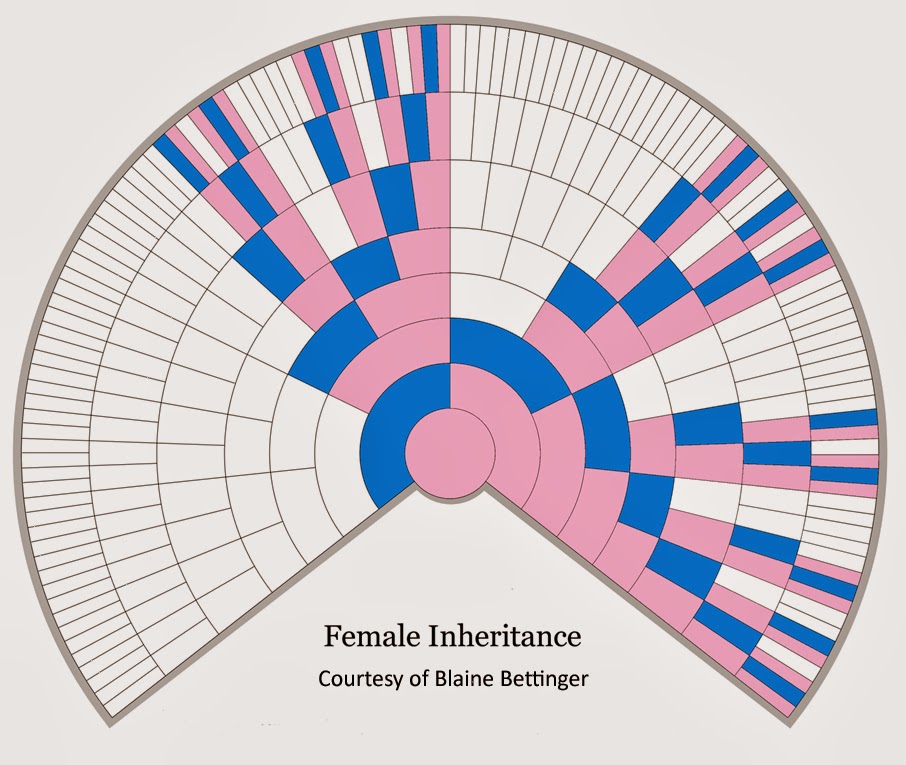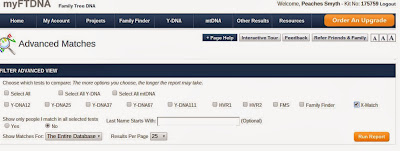 My book on genetic genealogy is finally in print, and it feels very strange promoting yourself; however, every blogger has different followers, and as this is the first book which covers so many aspects of genetic genealogy for nearly a decade, forgive me for being shameless.
My book on genetic genealogy is finally in print, and it feels very strange promoting yourself; however, every blogger has different followers, and as this is the first book which covers so many aspects of genetic genealogy for nearly a decade, forgive me for being shameless.I decided to write this book after not being able to convince those who are more knowledgeable than I to do so. I needed a more current source for members of my audiences so I could reduce the time in answering basic questions repeatedly. Not that I mind answering, but it became an issue of time.
SO...to review my own book, I share the following from the back cover:
Genetic Genealogy: The Basics and Beyond provides genealogists, both budding and experienced, with the knowledge and confidence to use DNA testing for their family research. The book guides genealogists through the introductory level of understanding various tests to a more advance level of determining what DNA segments came from which ancestor.
Genetic Genealogy explains how DNA testing helps when written records stop and discusses how testing can prove or disprove oral family history. The book describes which tests can help adoptees find their biological families and mentions a website that offers free assistance for testing and locating adoption information.
Genetic Genealogy helps you understand why you resemble your relatives and explains how DNA testing can connect you with cousins you never knew existed. Steps for encouraging potential cousins to test are outlined. The more adventurous can find guidelines for becoming a project administrator, a genetic genealogy speaker or a facilitator for their genealogical society’s DNA interest group.
Genetic Genealogy: The Basics and Beyond will help both the experienced and the fledgling researchers become genetic genealogists able to use DNA testing to resolve their genealogical roadblocks.
My book can be ordered through these online publishers: AuthorHouse, Amazon and Barnes and Noble or from your local bookstore upon request. It is available in trade paperback as well as an e-book for both the Kindle and Nook.
ISBN: 978-1-4918-4090-0 (trade paperback)
ISBN: 978-1-4918-4089-4 (e-book)
Here's a few comments from those who have reviewed the book:
“This is the first time in years that a book has been devoted to genetic genealogy. It is a welcome addition to the growing body of literature on this topic, which shares the rare distinction of being both an addictive hobby and a scientific discipline. Emily is one of the early pioneers of genetic genealogy, and like a passionate tour guide, she takes us on an enthralling journey from the fascinating basics of this new science right up to the current state of the art. There is something for everyone here, whether you are a beginner or at a more advanced level. And with practical examples drawn from her experience of using DNA to break down brick walls in her own family tree, Emily has created a comprehensive instruction manual with a very big heart.”
̶ Dr. Maurice Gleeson, Genetic Genealogy Ireland
"Writing a single volume overview of DNA testing is growing more difficult year on year as the field becomes ever more exciting and complicated. Emily's book is a comprehensive description of the key genealogical uses of DNA testing as they existed in 2013. Leavened with examples and experiences, it contains loads of practical advice, particularly on the newer tests like FTDNA's Family Finder."
̶ Chris Pomery, author of Family History in the Genes:
Trace your DNA and grow your family tree
“Finally, a book for beginners about genetic genealogy, written in a way everyone can understand. Emily not only covers the basics, but includes such hot topics as autosomal DNA, how to work with your various kinds of matches and what all of the numbers mean. Now everyone can get the most out of their results. This book is destined to become the Bible of genetic genealogy!”
̶ Roberta Estes, DNAeXplain – Genetic Genealogy
AND...once again, I thank the many people who did help edit and contribute information for the good of the whole genetic genealogy community.
I dearly hope that you will find some helpful information within the pages and that all of you will continue to share your knowledge of how DNA testing helps genealogy.
Enjoy,
Emily
23 Jan 2014

















